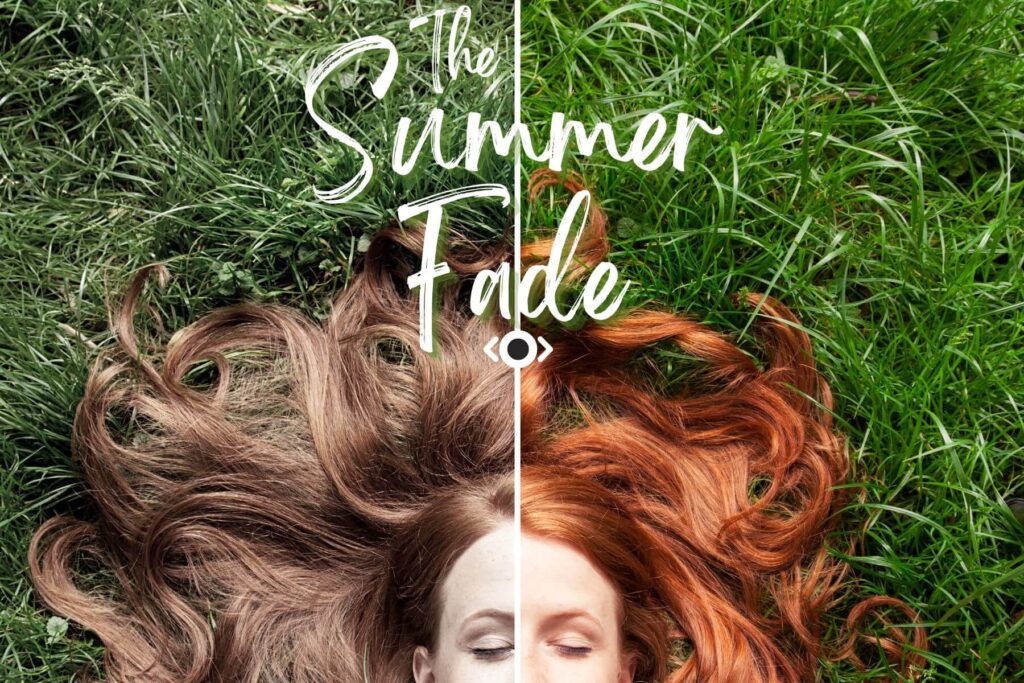The end of summer is always a bittersweet time. Warm weather begins cooling off, the pools are closing, and the beaches don’t have quite as many faces on them. Those summer activities are ones to remember, but they can be remembered in the wrong way when it comes to your hair and how that summer fun can leave your hair a discolored mess.
What is a Glossing?
A Hair Glossing is a quick add-on service that refreshes color that has faded or oxidized by depositing color and resealing the hair cuticle, allowing hair to have a more natural, rich tone and healthy feel vs. the faded, unnatural look and unhealthy feel.
A Hair Glossing is recommended after prolonged sun exposure (like after the summer months) or every three months to help keep hair looking and feeling great and extend the life of healthy hair. One of our hair specialists can also make recommendations on when hair is beginning to oxidize and when a Hair Glossing will make the most impact!
What Causes Hair To Fade or Oxidize?
When hair oxidizes, the hair color fades, lightens, and becomes discolored at times, creating reddish or green undertones. Oxidization can also cause the hair to become damaged or broken, ultimately leaving hair looking and feeling damaged.
Five main factors can lead to hair color fading or oxidizing. They include:
- Exposure to sunlight: Sunlight contains ultraviolet (UV) rays, which can break down the hair color molecules.
- The use of heat styling tools: Heat styling tools, such as blow dryers and curling irons, can damage the hair cuticle, which can also cause the hair color to fade.
- Types of water: Hard water contains minerals that can build up on the hair and strip away the hair color. Chlorine is a bleaching agent that can strip the color from your hair. Chlorine can also dry out your hair, making it more susceptible to damage. Sea water opens up the hair cuticle, which is the outermost layer of the hair. This allows the color molecules to escape from the hair shaft. The sun’s UV rays combined with chlorine or sea water can worsen damage and color fading.
- The frequency of shampooing: Not shampooing hair regularly can leave a build-up of hair product in the hair. This build-up can leave hair color looking lifeless and very dull.
- Improper styling products: Products that are not water soluble or do not easily wash out of hair can create build-up on the hair, again leaving hair looking lifeless and dull.
What does faded hair or oxidized hair look like?
Hair oxidization can look different in different hair colors:
- Browns – Oxidized brown hair has turned brassy or orangey in color. The oxidation process causes the melanin pigments in the hair to break down, resulting in a brassy color.
- Blondes – Oxidized blonde hair is blonde hair that becomes brassy or orange. It can also have greenish tones if it has been in chlorine.
- Reds – Oxidized red hair can look a variety of different ways. Orange is the most common way for oxidized red hair to look. The red pigment in the hair reacts with oxygen and sunlight, which can cause it to fade and become more orange. Pink can happen if the hair is dyed with a red dye that contains a lot of blue pigment. The blue pigment can fade over time, leaving the hair with a pink tint. Oxidized red hair can also look dull and lifeless. This is because the red pigment has faded, and the hair is no longer as vibrant.
Discover the Health of Your Hair and Scalp
If you are experiencing damaged hair, hair breakage, excessive hair shedding, itch, or dandruff, you should talk to one of our scalp doctors or trichologist. We can help you determine the cause of your hair loss and recommend treatment options with our exclusive ScalpCheck, which gives you an in-depth analysis designed to help determine the health of your hair and scalp.


